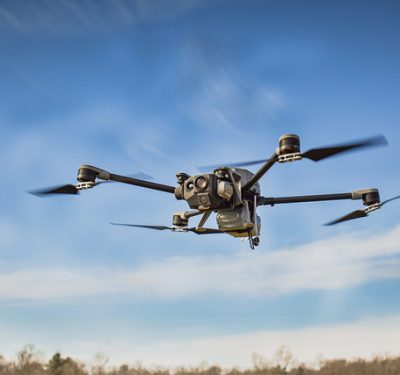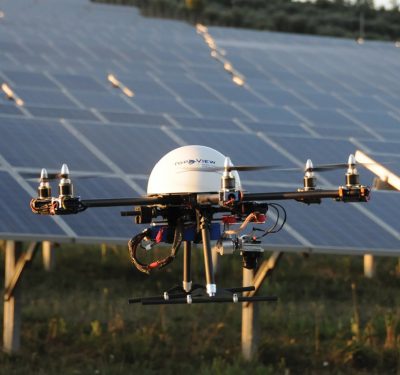 I fear you’ll be reading this while we remain besieged by COVID-19. So our first thought is to wish you and yours good health and, alas, good recovery if the coronavirus is impacting your personal and professional well-being.
I fear you’ll be reading this while we remain besieged by COVID-19. So our first thought is to wish you and yours good health and, alas, good recovery if the coronavirus is impacting your personal and professional well-being.
In our attempt to be a “journalistic first responder” during these fraught, rapidly-changing times, we’re aggressively covering the virus’ impact on our industries. The situation’s urgency leads us to do this mainly via our timely insideunmannedsystems.com and insidegnss.com websites, and through Twitter and a ramped-up LinkedIn presence. We reiterate our call for you to send news, product and other information of use to the unmanned systems community to me at abe@insideunmanned.com. Similarly, alert Alan Cameron at alan@insidegnss.com with your latest satellite navigation intel.
Strategies During Chaos
Even amid disorder, we need to implement the autonomous solutions that can win the day when the smoke clears. In this issue, we concentrate on the defense sector, and inevitably, on its double-helix relationship with the civil/commercial sphere. It’s a bit of an acronym-fest, so let me outline just how important the decisions facing it are for policy, technology and procurement.
Policy: The U.S. military is closing in on major decisions that will empower the next generation of warfighters. In his column, Major General James Poss (Ret.) gets inside the culture clashes and alignments that are influencing equipment acquisitions for our Air Force, Navy and Marines. Then, he and technology reporter Vicki Speed explore the testing of two of the important initiatives — ALE (Air Launched Effects) and FTUAS (Future Tactical UAS) — that will shape the Army’s future.
As Martin UAV’s Heath Niemi says, “Once we get these systems into the hands of soldiers, they will come up with applications that we never consider.” Just as important, General Poss fervently believes, choosing from U.S. drone candidates can bring small and medium-sized drone manufacturing back home.
Technology: UAS are evolving as fast as they fly. As Dave Anderson of Insitu tells Senior Editor Renee Knight, “delivering what we delivered just a few years ago is not enough.” ISR (Intelligence, Surveillance and Reconnaissance) sensors are featuring smaller size and greater capability, which, as our PNT feature points out, require optimal selection of a GNSS/inertial navigation system.
Similarly, vertical takeoff and landing work may, as David Arterburn of the University of Alabama puts it, “make VTOL more capable than it’s ever been.” For example, the brand-new Quantix Recon — a sister “tail-sitter” hybrid to AeroVironment civilian-oriented Quantix Mapper — can provide automated, quick and detailed in-field intel.
Procurement: Though the world has been knocked flat by the virus, there still are opportunities if you know where to look. U.S. agencies are cutting deals via the Other Transaction Authority (OTA), which links industry and academia for a broad range of research, prototyping and production activities, to, as Washington Editor Dee Ann Divis says, be “collaborative, practical and inexpensive for even the smallest firms to join.” In “Law-Tech Connect” columnist Dawn Zoldi looks into “T3” — the DOD’s Technology, Transfer and Transition process — to link federal technologies with the marketplace.
Going forward requires understanding the present. Our “Five Good Questions” speaks with Dean Gettinger of the Center for the Study of the Drone out of Bard College. The Center’s site is a one-stop shop for learning about the host of drone models currently deployed by militaries worldwide, as well as about DOD spending and drone efforts in both counter-UAS and public safety.
We hope the issues and ideas we’ve covered can inform any time you can steal to contemplate the future of the defense-commercial nexus. Meantime, we wish you all clearing skies, higher ground and safe harbor.






